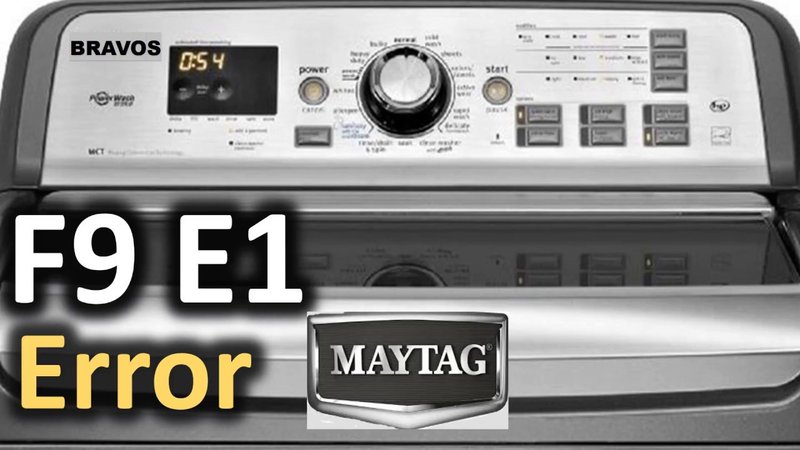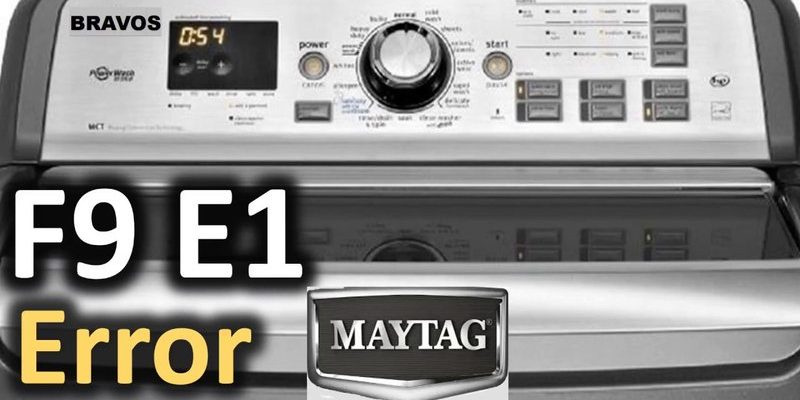
So, what exactly is this mysterious E1 error code? In simple terms, it usually signals a problem with the water level sensor in your Maytag washing machine. Think of it like a person who can’t quite gauge whether their cup is half full or half empty — it’s a little confused. Essentially, your washer is having trouble figuring out how much water it needs to get your clothes clean. While it’s not a dire emergency, it’s super important to address this issue to ensure your laundry routine stays smooth and uneventful.
Understanding the E1 Error Code
Before you start worrying about repair bills or replacement costs, let’s dive a little deeper into what the E1 error code actually means. When your Maytag washing machine throws up this code, it’s trying to tell you there’s a hiccup with the water level sensor or the pressure switch. Imagine if you were trying to fill a glass, but the faucet wasn’t cooperating, and you weren’t sure just how much to fill. That’s exactly the confusion your washer is facing.
In the world of appliances, the water level sensor is a pivotal component. It determines the appropriate amount of water needed for each wash cycle. If it’s malfunctioning or experiencing any kind of blockage or obstruction, the machine can’t do its job effectively. This might lead to either too much water, which can cause overflow, or too little water, leaving your clothes a bit soapier than desired.
Here’s the good news: in many cases, this isn’t an end-of-the-world scenario. Often, cleaning certain parts or making minor adjustments can resolve the issue. However, ignoring the E1 code can have long-term effects, potentially harming other parts of your washing machine. So, while the machine might continue to work for a while, it’s not ideal to leave this issue unchecked.
The Safety Aspect of Continuing to Use Your Machine
You might be wondering if it’s safe to continue using your washing machine when it’s flashing this pesky code. The short answer? It depends. While the E1 error points to a fairly common issue, it doesn’t pose an immediate danger in most scenarios. Think of it like driving with a check engine light on; it’s usually okay for short jaunts, but not advised for long trips.
Using the machine continuously when it’s in distress could exacerbate the problem. For instance, if the sensor isn’t operating right, your machine could potentially overfill. This might lead to leaks, water damage, and even mold growth in unwanted areas. Conversely, if there’s not enough water, clothes might not rinse properly, leading to detergent residues on your garments.
For peace of mind and the longevity of your appliance, it’s best not to make a habit of using it with persistent error codes. Instead, consider it a temporary workaround until you can fix the issue. Seeking help from an expert or consulting your user manual can provide specific insights tailored to your model.
Steps to Troubleshoot the E1 Error Code
So, what should you do next? Before calling in the cavalry, there are a few troubleshooting steps you can try on your own. First, open up your washer and check for any visible blockages in the hose or the water inlet. Much like a clogged coffee machine, a quick clean-up might just do the trick. Sometimes, removing and reinserting the hoses can reset any displacements that are causing the issue.
Next, listen for unusual noises during the wash cycle. If anything sounds off, it might hint at a more specific internal problem. Our washing machines, much like old cars, often give auditory clues when things aren’t quite right.
If these steps feel a bit overwhelming or don’t resolve the issue, don’t hesitate to consult a professional technician. They can offer a more detailed diagnosis and help you decide if parts need replacing. Guiding you through repair options, an expert ensures your washing machine gets back to its best self.
Preventative Measures and Long-Term Care
Addressing the E1 error is important, but preventing it from happening again is equally crucial. Regular maintenance of your washing machine can go a long way in keeping these issues at bay. Think of it like taking your car for regular oil changes — it’s all about ensuring everything runs smoothly.
One simple preventive step is to routinely check and clean the water inlet filters. These small screens can collect debris and should be cleaned periodically to maintain optimal water flow. Regular inspection of hoses for signs of wear and tear can also prevent unexpected blockages or leaks.
Another tip? Don’t overload your washing machine. Just as stuffing too many clothes into a suitcase makes it hard to zip, cramming your washer can strain its components. Following the manufacturer’s load recommendations ensures your machine operates as intended.
By staying proactive and attentive to error codes like E1, you can ensure your Maytag washing machine continues to serve you well, keeping laundry day as stress-free as possible. If tackled promptly, minor issues don’t have to escalate into major problems. Take care of your machine, and it’ll take care of you!
